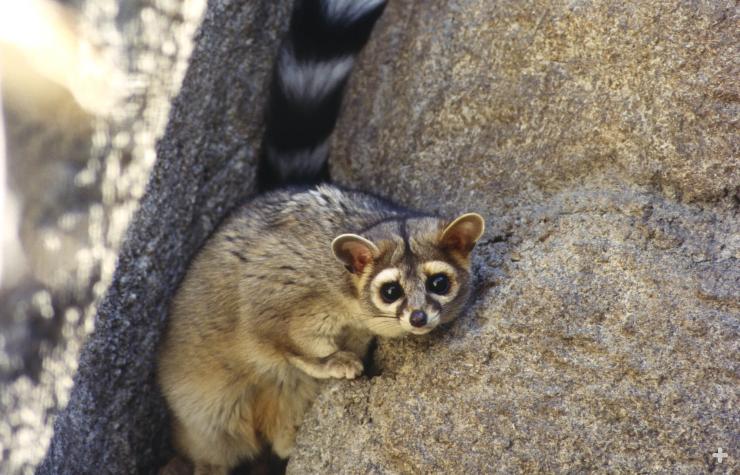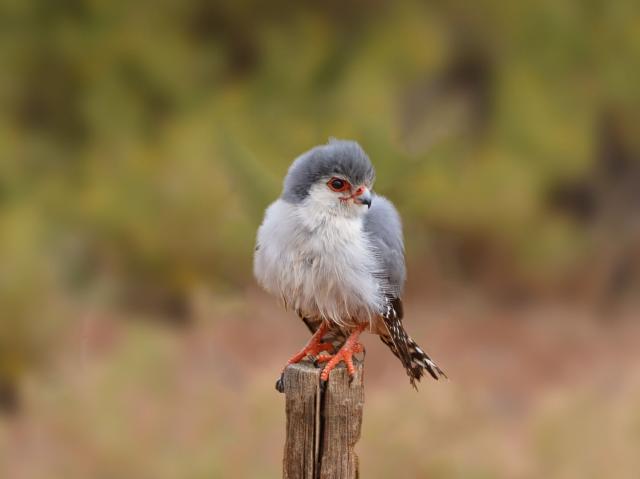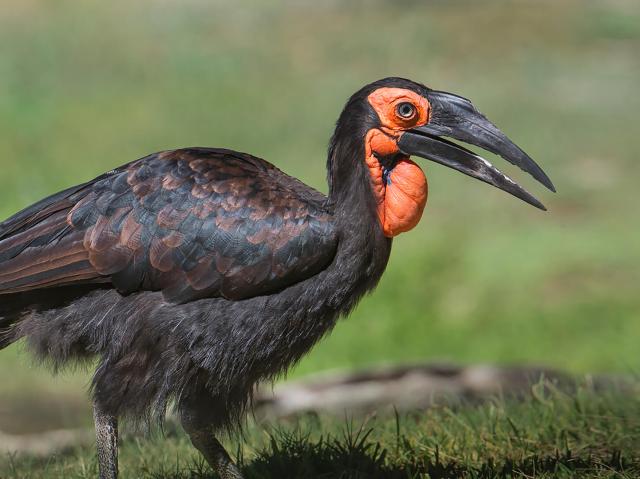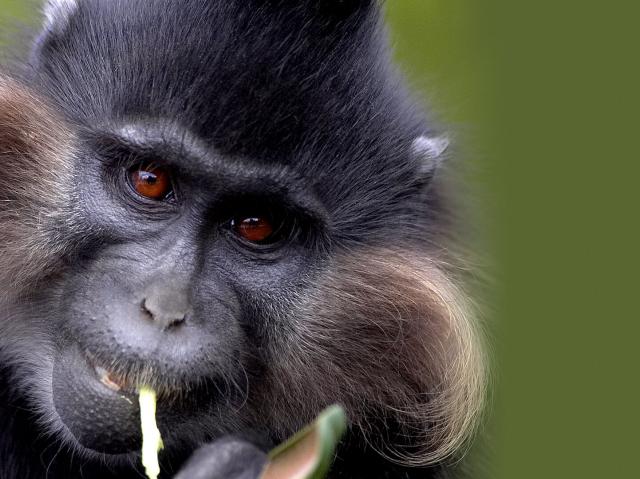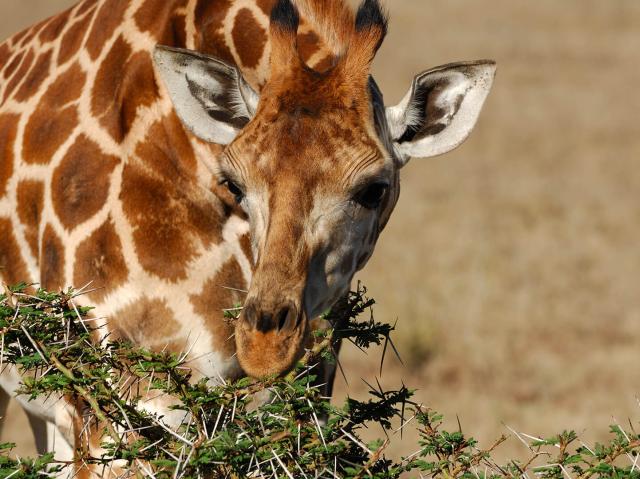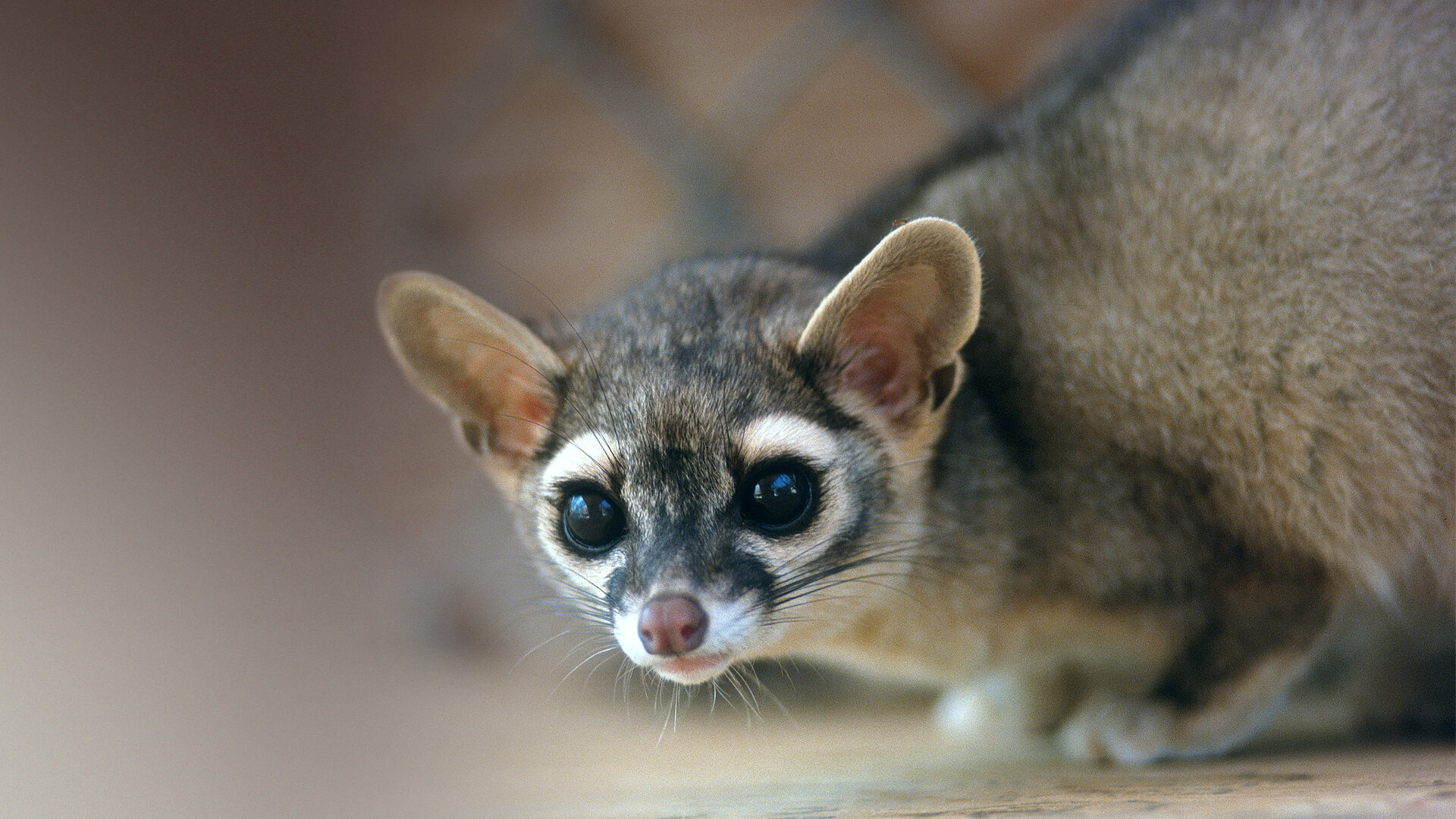
Ringtail

- Class: Mammalia
- Order: Carnivora
- Family: Procyonidae
- Genus: Bassariscus
- Species: astutus

ABOUT
Drat, I'm not a cat! Even though this eye-catching omnivore sports a few vaguely feline characteristics such as pointy ears, a sleek body, and a fluffy tail, the ringtail is really a member of the raccoon family.
Its cat-like appearance and famed mouse-hunting skills have earned it several common names, including ring-tail cat, civet cat, and miner’s cat (it reportedly kept gold miners’ quarters vermin-free).
Tall tails. Slimmer than a house cat but more robust than a weasel, the ringtail also somewhat resembles a small fox. The eyes are large and black, each surrounded by a patch of light fur. The ringtail measures 12 to 18 inches (30 to 46 centimeters) long with a tail of about the same length, and weighs less than 3 pounds (1.4 kilograms). The body is buff to dark brown in color with white underparts and a well-defined black and white striped tail. Ringtails’ feet sport short, straight, semi-retractable claws and digital foot pads surrounded by hair, except for the first digits.
Rock on, ringtails. Ringtails prefer habitats with rocky outcroppings, canyons, or talus slopes and can be found in semi-arid country, deserts, chaparral, oak woodlands, pinyon pine woodlands, juniper woodlands, and montane conifer forests.
They are excellent climbers, with several behavioral and physical adaptations: ringtails can maneuver along cliffs and ledges by ricocheting from wall to wall. They can also climb in small crevices by pressing all four feet on one wall and their back against the other. Rapid, headfirst, vertical descents are accomplished by rotating the hind foot 180 degrees, allowing the pads of the feet and the claws to retain contact with the surface.
HABITAT AND DIET
Den, sweet den. A ringtail's home is called a den. They will den in tree hollows, rock crevices, the abandoned burrows of other wildlife, mine shafts, and abandoned buildings, and some are even known to make themselves at home in the attics of occupied (human) homes.
Danger from above—and behind. Great horned owls, coyotes, bears, and bobcats all prey on ringtails, but ringtails also face the threats of habitat fragmentation and vehicle strikes. As solitary predators that hunt at night, ringtails run the risk of getting hit by cars.
A little of this, a little of that... Ringtails are omnivorous, but they show a preference for meat. In their native habitats, they eat rats, mice, squirrels, and cottontails, including carrion; snakes and lizards; insects, mostly grasshoppers and crickets; spiders and scorpions; and fruits of native plants.
FAMILY LIFE
A lot to say. Ringtails use a variety of vocalizations to get their point across. Adults can emit an explosive bark, a piercing scream, and a long, high-pitched call. Babies chirp, squeak, and whimper.
Scent seems to be as important as vocalizations for communication for ringtails. They scent mark their home range territory by rubbing urine on the ground and on raised objects. During the mating season, ringtails increase their marking activity to attract a mate and scare off competitors of the same sex.
Privacy, please. Not a lot is known about the ringtail’s mating habits, as they have not been observed to much extent. Female ringtails experience a single estrous cycle in a season, usually mating from February to May. The gestation period ranges from 51 to 54 days. Births usually occur in May or June, with a litter size ranging from one to four.
Females choose a den in a rock crevice, boulder pile, or tree hollow, in which they bear their young. Newborns are altricial (helpless and needing care), and they don’t open their eyes until around one month of age. The young can take solid food at 30 to 40 days of age and are weaned at about 10 weeks.
The female is mainly responsible for care, and forages with her young beginning when they are about two months old. Mom sometimes allows the father to play with with the young as they grow older. Ringtails reach sexual maturity in both sexes near 10 months of age.
CONSERVATION
Look both ways. Along with habitat fragmentation, ringtails are threatened by vehicle strikes. These omnivores hunt at night and live near people, so it’s easy to see how they might end up getting run over. San Diego Zoo Wildlife Alliance conservation scientists are studying ringtail diets across seasons to examine the relationship between food selection, space use, and road mortalities.
By supporting San Diego Zoo Wildlife Alliance, you are our ally in saving and protecting wildlife worldwide.
LIFE SPAN
7 years; 14 years in managed care
YOUNG
Gestation: 51 to 54 days
Number of young at birth: 1 to 4
Weight at birth: 0.88 ounces (25 grams)
Age of maturity: 10 months
SIZE
Length: 12 to 18 inches (30 to 46 centimeters), plus a 12- to 18-inch-long tail
Weight: 1.5 to 2.5 pounds (680 to 1,133 grams)
Fun Facts
The ringtail’s long tail helps with balance, allowing it to climb nearly vertical faces in the rocky terrain they prefer.
When threatened, the ringtail may let out a high-pitched screech and emit a foul-smelling secretion from its anal glands to discourage predators.
In Mexico, ringtails are often called "cacomistles" derived from the language of the Aztecs. In Spanish, it means "nimble thief."


